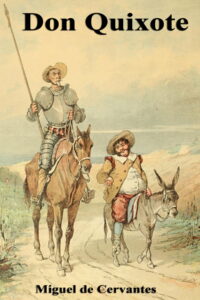Glossary Term
Blackjack Term
Blackjack Term
Used In: Blackjack
Introduction to the Term Blackjack
Blackjack is a widely recognized term in the casino world, referring to the best possible hand in the card game of the same name. This hand consists of an ace and a card valued at ten, which includes the ten, jack, queen, and king. The game itself, also known as twenty-one, revolves around players attempting to beat the dealer by having a hand value closest to 21 without exceeding it. The term “Blackjack” specifically signifies achieving this hand with just two cards, resulting in an automatic win for the player unless the dealer also has a blackjack, in which case the round ends in a push. This article will explore the intricacies of this term, including its components, rules, probabilities, and historical context, providing a thorough understanding for both new and experienced players.
Definition of Blackjack
In the game of blackjack, the term “Blackjack” refers to the highest possible hand, consisting of exactly two cards: an ace and any ten-value card (10, jack, queen, or king). This combination totals 21, the optimal score in the game. When a player is dealt a blackjack, they achieve an immediate win, provided the dealer does not also have a blackjack. If both the player and the dealer have blackjack, the hand is a push, meaning neither side wins, and the player's original bet is returned. Blackjack is not only a specific hand but also the name of the game itself, which emphasizes the significance and desirability of this hand in the gameplay. The ability to understand and recognize a blackjack is fundamental for anyone playing the game.
Components of a Blackjack Hand
A blackjack hand is composed of two specific cards: an ace and a card valued at ten points. The ace is a unique card in blackjack, as it can be worth either one point or eleven points, depending on which value is more advantageous for the hand. The ten-value cards include the ten, jack, queen, and king. When combined, these two cards create a total value of 21, which is the highest possible hand in the game. The versatility of the ace, combined with the high value of the ten-point cards, makes this combination particularly powerful. Achieving a blackjack not only secures a win, but it typically offers a higher payout compared to other winning hands, often at a ratio of 3:2.


Rules and Payouts for Blackjack
In blackjack, the rules governing the hand known as “Blackjack” are straightforward but crucial. A player is dealt a blackjack when their initial two cards are an ace and a ten-value card, summing to 21. When this occurs, the hand is immediately revealed, and the player wins unless the dealer also has a blackjack, resulting in a push. The standard payout for a blackjack is 3:2. For example, if a player bets $10 and is dealt a blackjack, they receive $15 in winnings, in addition to their original $10 bet. However, payout ratios can vary in some casinos or game variations, with some offering a 6:5 payout. This makes it important for players to verify the payout rules before playing. In cases where the dealer's face-up card is an ace, players are often offered “insurance.” This is a side bet that the dealer has a blackjack. If the dealer does have a blackjack, the insurance bet pays 2:1. However, if the dealer does not have a blackjack, the player loses the insurance bet and the game continues with the original hands.
Probability and Strategy for Achieving Blackjack
The probability of being dealt a blackjack in a standard game is approximately 4.83%. This percentage is derived from the fact that there are four aces and sixteen ten-value cards (tens, jacks, queens, and kings) in a standard 52-card deck. To calculate the exact probability, one must consider the number of favorable combinations (ace paired with any ten-value card) divided by the total possible two-card combinations in the deck.
While achieving a blackjack is largely a matter of luck due to the shuffle and deal of the cards, players can employ certain strategies to increase their overall winning potential. One fundamental strategy is understanding and adhering to basic blackjack strategy charts, which provide guidelines on when to hit, stand, double down, or split pairs based on the player’s hand and the dealer’s face-up card. These charts are statistically derived to minimize the house edge.
Another key strategic consideration is card counting, a more advanced technique used to keep track of the proportion of high to low cards remaining in the deck. While card counting does not guarantee a blackjack, it can provide players with a better understanding of when the deck is favorable for hitting high-value hands, including blackjack. However, it's important to note that card counting is frowned upon by casinos and can lead to being banned from play if caught.
Historical Context of Blackjack
The origins of blackjack can be traced back to the early 17th century, with roots in various European card games. The game is believed to have evolved from the Spanish game “Veintiuna,” meaning “twenty-one,” which was referenced in Miguel de Cervantes' early 1600s novel, “Don Quixote.” In this game, the objective was also to reach a total of 21 points without going over.
Blackjack gained popularity in France, where it was known as “Vingt-et-Un,” and in Italy, where it was called “Sette e Mezzo.” The French variant introduced the concept of betting against the house, a key element that shaped the modern version of blackjack.
The game was brought to North America by French colonists, where it quickly became a favorite in gambling establishments. In the early 20th century, American casinos introduced a special bonus payout to promote the game, offering a 10:1 payout if a player's hand included the ace of spades and a black jack (either the jack of clubs or jack of spades). Although this specific payout is no longer offered, the name “blackjack” stuck and became synonymous with any ace and ten-value card combination.
Blackjack's popularity surged further in the 1960s when mathematician Edward O. Thorp published “Beat the Dealer,” a book that introduced the concept of card counting. This revolutionized the game by providing players with strategies to reduce the house edge.
Today, blackjack is one of the most played casino games worldwide, both in land-based and online casinos. Its rich history and the blend of chance and strategy continue to attract players, making it a staple of the casino gaming experience.


Conclusion
“Blackjack” represents the pinnacle of achievement in the game of blackjack, signifying a hand consisting of an ace and a ten-value card. This combination, also known as a natural 21, offers players an immediate win, provided the dealer does not also have a blackjack. Understanding the components, rules, probabilities, and strategies associated with achieving a blackjack is essential for players looking to maximize their success at the tables.
As one of the most iconic and widely played casino games, blackjack continues to captivate players worldwide with its blend of luck and skill. From its humble origins to its evolution into various exciting variations, blackjack remains a timeless classic in gambling entertainment. Whether playing in a traditional brick-and-mortar casino or enjoying the game online, the allure of blackjack persists, promising thrills and excitement for players of all skill levels. By mastering the intricacies of achieving a blackjack and employing sound strategies, players can enhance their gaming experience and increase their chances of success on the virtual or physical felt.
The Top Online Casinos for Blackjack Gambling
For players seeking the thrill of blackjack gambling online, several top-rated casinos offer exceptional gaming experiences. These casinos boast a wide selection of blackjack variants, seamless gameplay, generous bonuses, and secure payment options.
No results were found!


Author
Gabriela Kirilova | Content Optimization Director








